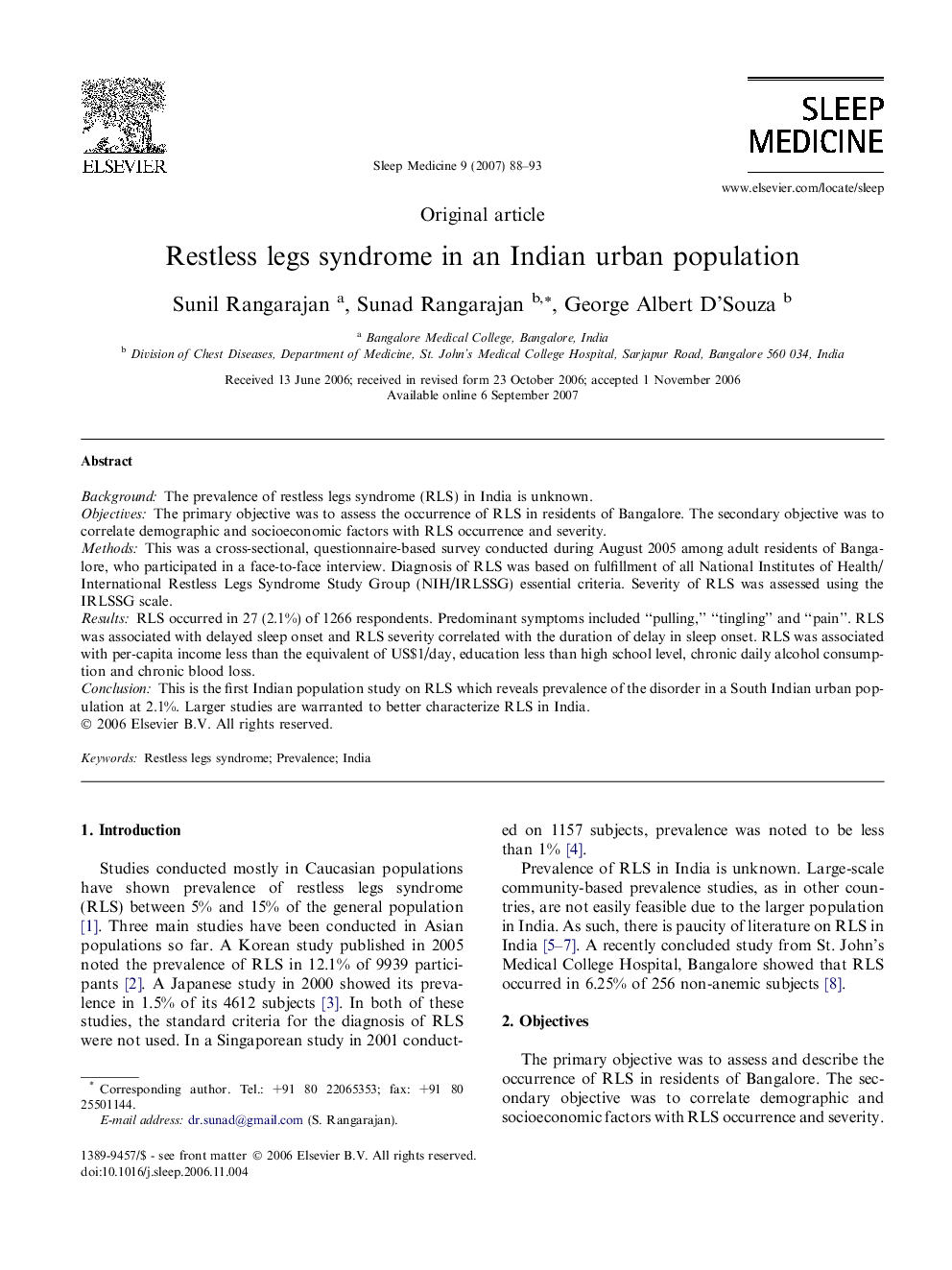| Article ID | Journal | Published Year | Pages | File Type |
|---|---|---|---|---|
| 3178188 | Sleep Medicine | 2007 | 6 Pages |
BackgroundThe prevalence of restless legs syndrome (RLS) in India is unknown.ObjectivesThe primary objective was to assess the occurrence of RLS in residents of Bangalore. The secondary objective was to correlate demographic and socioeconomic factors with RLS occurrence and severity.MethodsThis was a cross-sectional, questionnaire-based survey conducted during August 2005 among adult residents of Bangalore, who participated in a face-to-face interview. Diagnosis of RLS was based on fulfillment of all National Institutes of Health/International Restless Legs Syndrome Study Group (NIH/IRLSSG) essential criteria. Severity of RLS was assessed using the IRLSSG scale.ResultsRLS occurred in 27 (2.1%) of 1266 respondents. Predominant symptoms included “pulling,” “tingling” and “pain”. RLS was associated with delayed sleep onset and RLS severity correlated with the duration of delay in sleep onset. RLS was associated with per-capita income less than the equivalent of US$1/day, education less than high school level, chronic daily alcohol consumption and chronic blood loss.ConclusionThis is the first Indian population study on RLS which reveals prevalence of the disorder in a South Indian urban population at 2.1%. Larger studies are warranted to better characterize RLS in India.
